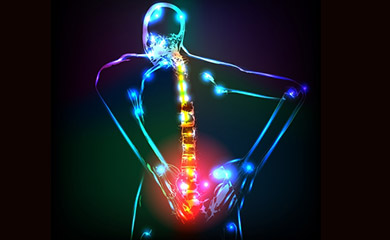
I was astonished recently to learn that in the United States, 100 million people suffer from chronic pain, which is defined as pain that lasts more than three months. That’s about a third of the total US population. What this means is that if you were to poll your friends and colleagues, you’d find that many of them are experiencing chronic physical pain, right now. And that doesn’t even include the people with some form of mental distress.
What’s more, the United States consumes a huge proportion of the global supply of pain medication, and the total economic cost of chronic pain is estimated to be $600 billion annually. Chronic pain is a national crisis.
Why is this so important to leaders? Because we are in a unique position to impact these statistics in a positive direction, through our own behavior and through the policies and culture we create inside our organizations.
Consider these top ten ways of preventing chronic pain (from Casa Palmera, Del Mar California):
- Maintain a healthy diet. Reducing the amount of high fat and high cholesterol foods in your diet as well eating appropriate portion sizes can greatly improve one’s health and risk for painful disorders which require specific pain treatment.
- Protect yourself from harmful chemicals. Touching or breathing in harmful chemicals in the air can lead to some forms of cancer. Wearing a face mask or gloves in hazardous areas (such as a work site) helps to prevent harmful inhalation and skin exposure.
- Kick those bad habits. Quitting bad habits like smoking and using drugs will often improve one’s health. Also, reducing the amount of alcohol one consumes is recommended. In these cases, if a painful condition does not occur, drug rehab for addiction may eventually be needed.
- Take adequate amounts of calcium. If you do not take in enough calcium through your diet, consider taking calcium supplements. Calcium encourages strong bones, which then reduces the chance that fractures will occur. Calcium is especially important for women due to their high risk for osteoporosis.
- Make an effort to become a healthy weight. Having excess weight on the body puts a person at a much greater risk for painful conditions because of the strain it places on the joints and its negative effects on the body’s organs. Also, being overweight is commonly associated with conditions like diabetes and heart disease.
- Keep a regular pattern of sleep. Don’t forget to relax every once in a while and get to bed around the same time every night. Approximately 7 to 8 hours of sleep is appropriate for most people.
- Wear protection from the sun. Applying sunscreen and wearing protective clothing can go a long way in preventing sunburns and skin cancer which may arise due to overexposure to the sun.
- Exercise regularly. Just 30 minutes a day of exercise can greatly improve your health. If you are one of the many people pressed for time, work out in individual ten minute sessions. It is also important to vary your workout routines between cardio, strengthening, and flexibility type workouts.
- Maintain good posture. If you sit at a desk for long periods of time, take a short break every once in a while to avoid strain. Carpal tunnel syndrome is a common work-related problem and may require treatment for pain at a pain treatment center if developed.
- Be aware of your family’s medical history. Certain diseases are hereditary. Keeping track of these conditions, taking extra steps to avoid them, and making yourself aware of their symptoms make help you prevent chronic pain in your life.
Why not scan this list and ask yourself:
- Where is the low-hanging fruit for me?
- How can I model behavior that I would want for those around me?
- What can I do to help my team be pain free?
- What can I do to help my family be pain free?